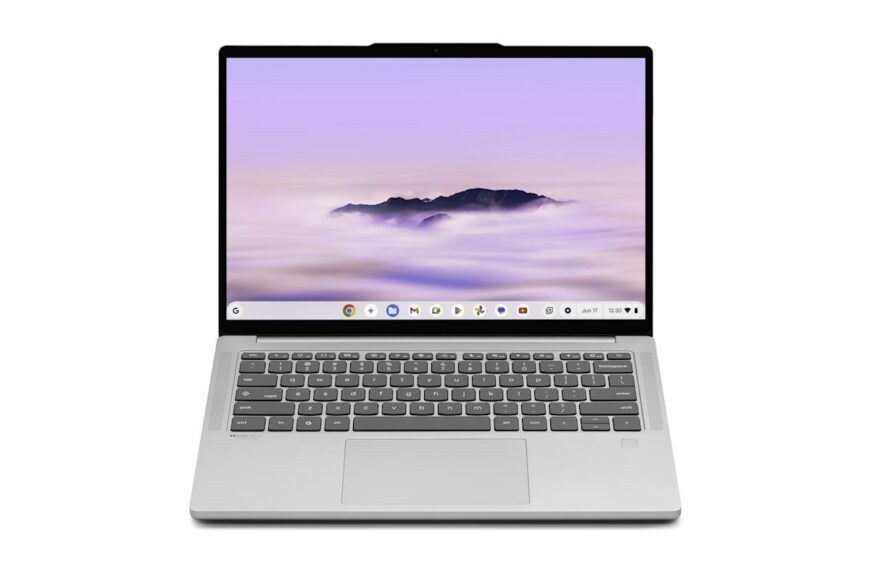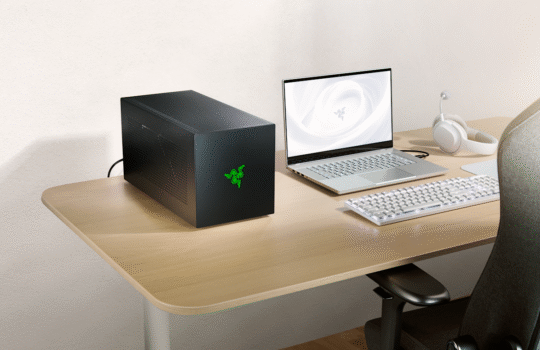Lenovo promises 17 hours of battery life on its new Chromebook Plus 14

For years now, most Chromebooks have run some variety of Intel or AMD processor. The occasional device used a MediaTek chip, but they were often underpowered and cheap devices that were hard to recommend. ARM-based processors have worked tremendously well for Apple on the Mac, and they’re being used in more and more Windows PCs as well. Now, Lenovo (makers of my favorite Chromebook) and Google are giving ARM a real shot with the $649 Chromebook Plus 14.
The companies say the MediaTek Kompanio Ultra 910 chip and its AI NPU can handle up to 50 TOPS — but more intriguing to me, Lenovo is also promising up to 17 hours of battery life. I’ll believe that claim when I see it; mediocre at best battery life has plagued nearly every Chromebook I’ve used in recent years. But switching to ARM could improve on what Intel-powered Chromebooks have delivered, both in terms of battery life and overall performance.
Time for the nitty-gritty specs. Lenovo’s Chromebook Plus 14 is, as you’d expect, a 14-inch laptop that looks quite similar to a silver MacBook Pro. It’s certainly more stylish and sleek than Lenovo’s more utilitarian (and awkwardly-named) IdeaPad Flex 5i Chromebook Plus. It weighs only 2.58 pounds (about a pound less than the Flex 5i) and is just over .62 inches thick. In addition to the Kompanio Ultra 910 chip, Lenovo is including either 12GB or 16GB of RAM and up to 256GB of storage. Lenovo isn’t skimping on the screen, either. The 14-inch OLED panel can be outfitted with a touchscreen and has a 1,920 x 1,200 resolution. The resolution is relatively modest, but totally in line with what you’d expect for the price.
There are a few other nice touches throughout. Lenovo’s latest is the first Chromebook with Dolby Atmos sound via a quad-speaker system that includes two downward-firing woofers. Audio quality on laptops has increased significantly in recent years, so I’m looking forward to hearing what Lenovo can deliver. The 5-megapixel webcam has a much higher resolution than most other Chromebooks, and there’s also a fingerprint reader for secure logins.
All told, this Chromebook is on the more expensive side compared to many other options. But when you compare its specs and design with other Chromebooks in this price range, Lenovo’s latest comes out looking pretty good. Of course, we’ll need to make sure the MediaTek chip is powerful enough and also see what battery life is like, but Lenovo’s track record is strong enough that I’m looking forward to seeing if we have a new king of the Chromebooks.
New AI features
Given that Google is relentlessly focused on adding AI features everywhere you turn, it’s no surprise that there are a handful of new AI tricks here. First are two that are currently exclusive to Lenovo’s Chromebook Plus 14: Smart Grouping and AI image editing in the Chromebook’s Gallery app. Google has been teasing Smart Grouping for a while now; it’ll look at your open tabs and documents and ask if you want to organize them into a separate virtual desk. And the Gallery app now has some AI-powered editing features like removing backgrounds or turning your images into stickers.
Beyond these are a bunch of AI features that are coming to all Chromebook Plus laptops, many of which will feel familiar if you’ve paid attention to what Google has released to other platforms in recent months. For example, you can now long-press the launcher and select an area of the screen to run a search. As usual, the default example is shopping — see a pair of shoes you want, highlight it and let Google find them for you. The integration does look nice, though, with a pop-over window showing you results so you don’t have to leave the app you’re using.
Similarly, Text Capture analyzes text in an image and suggests things like calendar appointments based on what it reads. Or highlighting an image of a recipe can pull all of the items you need for it into a Google Docs list.
The Quick Insert key, which was first introduced last year on Samsung’s Galaxy Chromebook Plus, can now be used to generate and insert AI images into anywhere your text cursor is pointing — it’s not just limited to Google apps. Finally, Google’s “help me read” tool has a new “simplify” option that can take complex language (think scientific explanations) and put it in plain language to make it easier to understand.
Anyone buying a Chromebook Plus this year will get a solid perk that Google first introduced last year: a full 12 months of the Google One AI Pro plan, which includes 2TB of Google Drive storage and access to more advanced Gemini features (you can find all the exact details here). Given that this is a $20 per month plan, it’s a solid additional value — at the very least for the storage, if you’re not all that interested in Gemini.
As for Lenovo’s new hardware, I’m looking forward to trying it soon to see if the ARM architecture can deliver the massive battery life and performance improvements that the company is promising. But if you want to throw down your cash now, Lenovo’s Chromebook Plus 14 is available at Best Buy and on Lenovo’s site to order as of today. (Note that, at least for now, only the more expensive version of the Chromebook Plus 14, with a touchscreen at 16GB of RAM, is available at Best Buy.)
Trending Products






